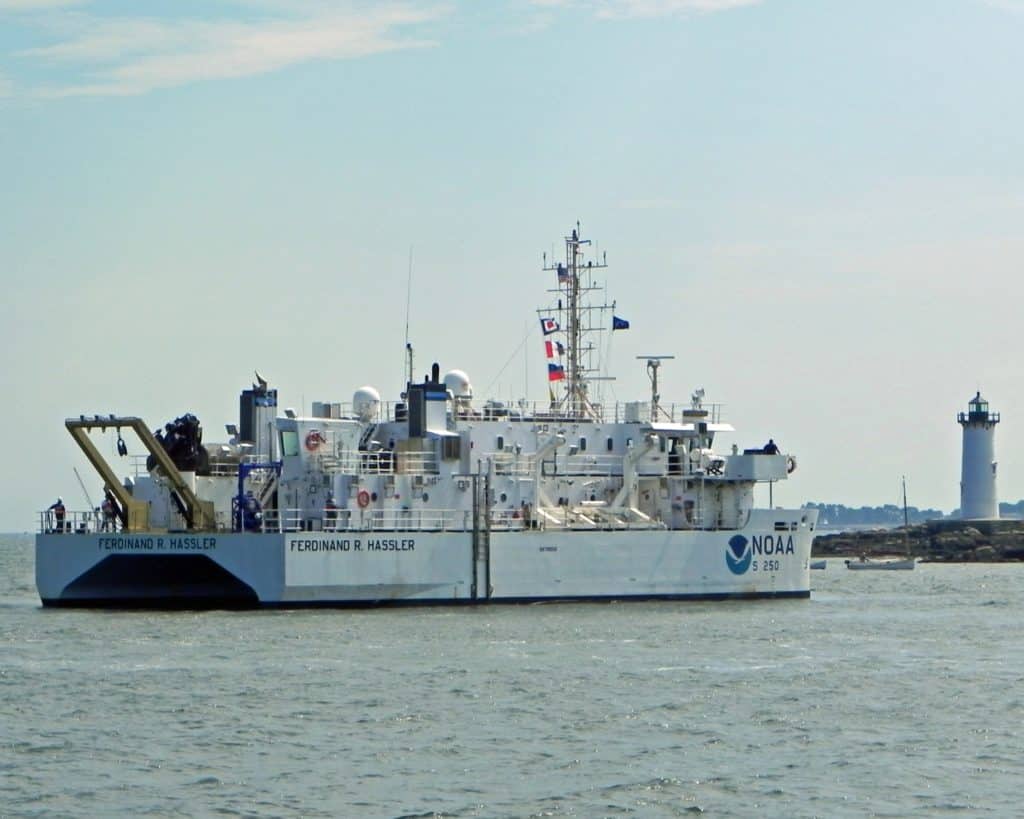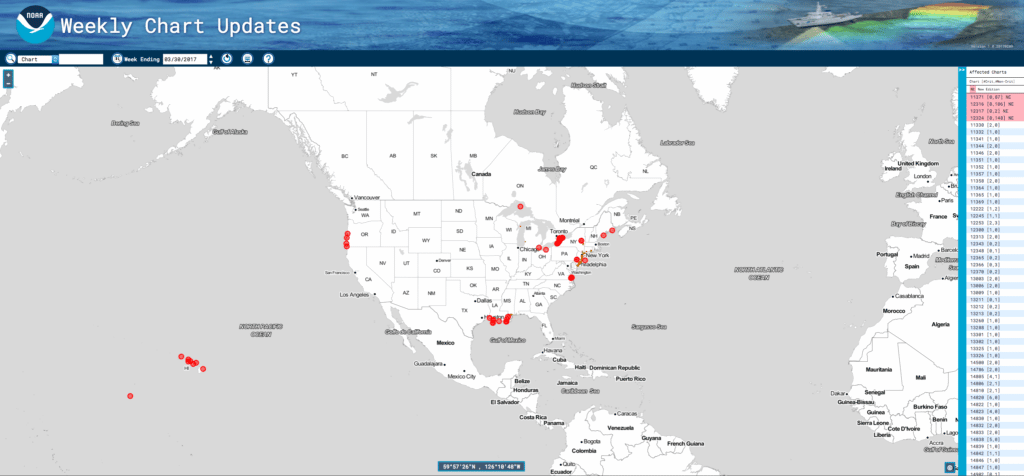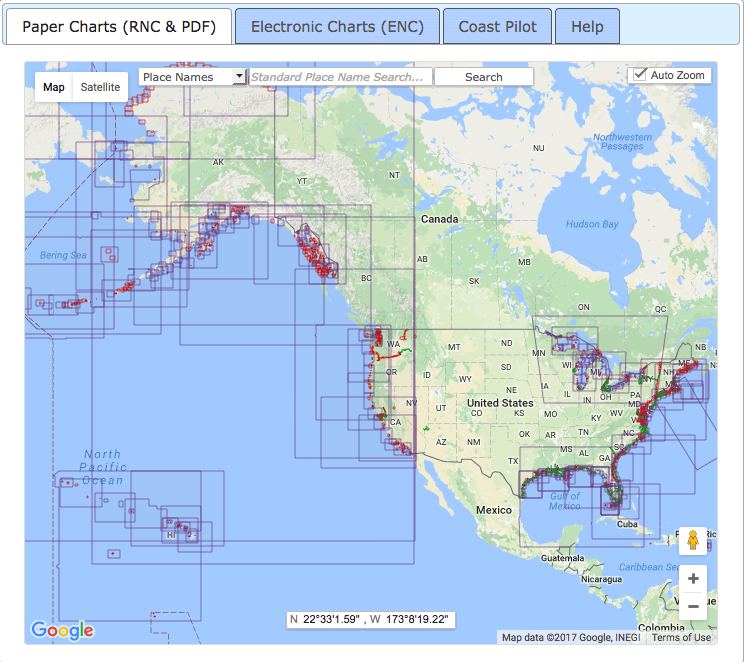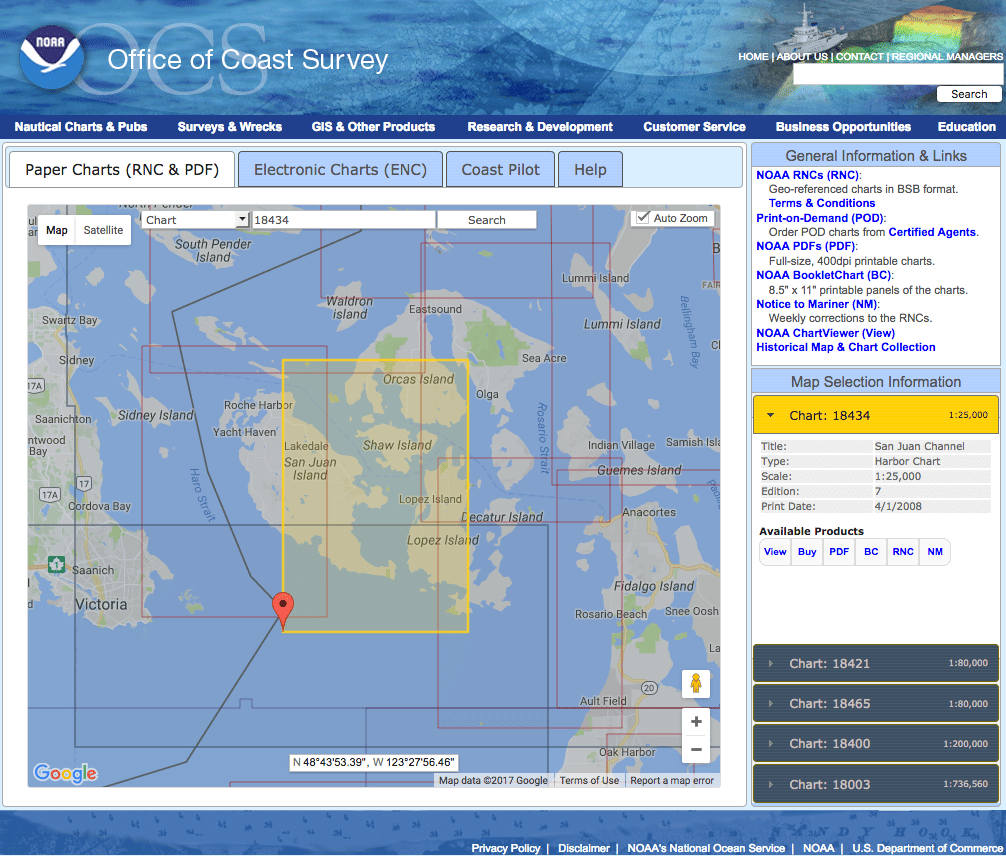
To paraphrase an old saw, there are two kinds of sailors: those who have kissed bottom and those who haven’t yet reached first base. My personal initiation to this unfurled when I was 11 years old and the family’s C&C 37 plowed a trench into a Chesapeake Bay sandbank that had shifted sometime after our printed chart of the area had been purchased. In those days, circa 1988, sailors typically had to rely on the National Oceanic and Atmospheric Administration’s Notice to Mariners to update charts (and few did) that were obsolete nearly as soon as they were printed. This was particularly a problem in cruising areas such as the Chesapeake Bay’s Middle Grounds and the Florida and Georgia coastlines, places that regularly experience seafloor metamorphosis, often courtesy of storm and hurricane action.
Steering clear of these migrating hazards and other changes that can affect navigation boils down to having up-to-date cartography and paying close attention to the tide. Today, with data updates just a few keystrokes and a Wi-Fi signal away, it’s easier than ever to know what’s under the keel. All you have to know is where to look.
Electronics Come of Age
On February 3, 2016, the U.S. Coast Guard published official guidance allowing mariners of all stripes to use electronic cartography, which can be viewed on a PC or dedicated chart plotter, instead of paper charts, as their primary navigation source. This marked a sea change from the days of skippers comparing navigational notes by lamplight and hand-updating their charts based on hard-earned — and shared — empirical evidence.
Critically, this evolution also marks a change in how mariners find and obtain their cartography. While brick-and-mortar chandleries and chart agents no longer stock drawers of paper charts, it’s easier than ever to find up-to-date ones, provided you’re familiar with technologies such as NOAA’s Interactive Catalog and Chart Locator, print-on-demand (POD) charts and user-generated cartography (UGC), as well as the automatic identification system (see “Leveraging AIS”).
Before setting off on a sailing trip, a prudent skipper begins by searching through the relevant cartography, and no matter what electronic or paper charts you use, it’s a pretty safe bet that the basic data presented was created by NOAA. The agency, formed in 1970, is the latest government entity to be responsible for survey work that has been conducted under various governmental guises since 1807.
While NOAA no longer physically prints or distributes charts, it produces free electronic cartography that’s easily downloadable in a multitude of formats, including PDFs; raster navigational charts (RNC), which are highly accurate paper-chart scans; and electronic navigation charts, also known as vector charts, where layers of data can be displayed and added. In addition, NOAA’s website offers links to cartography retailers that sell NOAA-certified paper and electronic charts.

Charts a Click Away
To support its paperless migration, NOAA significantly upgraded its cartography interface in 2016, giving mariners an intuitive and user-friendly research tool online. Users arrive on a macro-scale map of North America that is covered along its coastal boundaries, lakes and navigable waterways with various-size polygons, each corresponding to different types of charts (e.g., harbor charts, sailing charts, general charts). Some of the larger boxes or polygons contain smaller-scale charts, allowing visitors to drill down to find ever more detailed offerings. NOAA’s Office of Coast Survey also provides a useful overview of its various offerings (charts.noaa.gov).
Users select their chart type and zoom to a region before clicking on their desired micro-area, which drops a pin and triggers a yellow pop-up box to appear, depicting the chart’s boundaries. In the right-hand column of the website, under “Map Selection Information” a box shows the chart’s title, type, scale, edition and print date. For instance a West Coast sailor might find himself looking at “Chart 18434, San Juan Channel, Harbor Chart, 1:25,000, 7th edition, 4/1/2008.”
As an aside, NOAA’s chart numbers always correspond to the same cartography, meaning that the same chart number will always cover the same waters, even if the data contained within the cartography is dynamic. Chart 13246, for instance, will always cover Cape Cod Bay.
Depending on the chart, users can opt to view it online; buy it from a NOAA-certified third-party POD outlet; view or download a PDF of an RNC; download the RNC for free; or download a Booklet Chart (which is formatted into 8½-by-11-inch pages, for printing on home printers). Visitors can also read and download the Coast Guard’s Notice to Mariners, which offers weekly chart corrections.
Alternatively, sailors can use the site’s search bar to locate charts. This makes it easy to research the latest bathymetry data for your favorite cruising grounds, and it also allows for a seamless experience when jumping between chart catalogs, the website and your ship’s library.
“Finding charts is much easier now with technology,” says Tara Wallace, the chief of NOAA’s Nautical Data Branch. “It’s maybe not as much fun as going through drawers and touching charts, but it’s quicker, everything is at your fingertips and everything is updated. Before, you had to hand-correct your old paper charts.”

Keeping Up-to-Date
While some seafloors are largely static, others are subject to frequent storm-triggered changes or other obstructions, which — as I learned in 1988 — can rapidly obviate cartography. “The Hydrographic Service Division of NOAA does multiyear planning, where they take a look at different areas, the age of the charts and the needs of the mariners,” says Wallace. “They take storm cycles into account, but it’s mostly the age of the chart and the needs of the mariners” that prompt survey work.
Wallace says NOAA maintains six mobile navigation teams that oversee 175 major ports nationwide and negotiate storm-affected waters to survey and reopen harbors and commercial areas as needed.
NOAA also built a website (distribution.charts.noaa.gov/weekly_updates) that provides weekly chart updates from around the United States, based on their priority level.
“Users can enter the chart number and see red dots for areas with critical updates and brown polygons for noncritical updates,” says Wallace, adding that the website is updated every Thursday. Alternatively, users can find these same updates using NOAA’s Interactive Catalog and Chart Locator.
Once the correct chart numbers and titles have been identified, visitors can download the files and have them printed at a third-party business that offers POD services. “I used to stock $25,000 in chart inventory, but not anymore,” reports Capt. Henry Marx, a Safety at Sea instructor and owner of Landfall Navigation, a chart agent and chandlery in Stamford, Connecticut. He says he can print any chart, including the latest Notice to Mariners, in 10 minutes, in-house, using a large-format printer. “Print-on-demand is better because I’m not selling someone an obsolete chart,” he adds.

We’re in This Together
“The bathymetry in many areas of the country is not up to date, and NOAA will never have enough funding to survey these inshore areas properly,” says Ken Cirillo, Garmin’s lead product manager of marine cartography and content.
Instead, a number of electronics companies have found ways to augment NOAA’s cartography with the help of their customers, who are encouraged to share their UGC. So in addition to the electronic raster and vector charts that are widely available from third-party cartography companies, Garmin, GoFree (Navico), Humminbird and Navionics allow their sonar-equipped customers to record their sounder logs and create customized charts that use official bathymetric data as a base map, while overlaying high-resolution user-generated soundings data as a discrete layer. (In general, bathymetric data from official and UGC sources are not mixed.)
Users can typically create their own private cartography using their chart plotter, or they can contribute their information to a community data pool that cartography companies use to create a crowdsourced high-resolution layer that users can download and display. It’s worth noting that this data can be collected any time a skipper decides to mow the lawn, so to speak, to create new soundings of, say, a recently silted-in inlet along the Intracoastal Waterway. Privately collected data could also take on added value given the Trump administration’s proposed cuts to NOAA’s operating budget.
“Garmin’s Quickdraw Contours is a simple, powerful feature,” says Cirillo. The company is able to update its charts as new data is uploaded.
While UGC is becoming an increasingly important tool, Marx and Cirillo both point to the necessity of quality control, lest the situation become one of “garbage in, garbage out.” Fortunately, all sources interviewed for this article report that there have been precious few, if any, situations of malicious users, and that so-called bad data is usually attributable to excessive throttle. “If you don’t have enough data points and were running too fast, the results will be evident, and the community can choose not to use it,” says Cirillo.
As with many things in the world of marine electronics, so-called walled product gardens exist. “In a perfect world, there would be one giant server for all UGC from companies such as Navionics, Navico’s GoFree, Garmin and Humminbird, but there’s not one universal system,” says Cirillo, so any updates are proprietary and only as broad as the company’s customer base.
While the days of sifting through paper cartography and poring over printed chart catalogs may have slipped astern, finding and obtaining up-to-date cartography is easier than ever. True, there’s a certain romance to huddling over the nav station with your crew in the evenings, but thanks to POD services, this is still easily accomplished, without the need for hand corrections.
– – –
David Schmidt is CW’s electronics editor.








